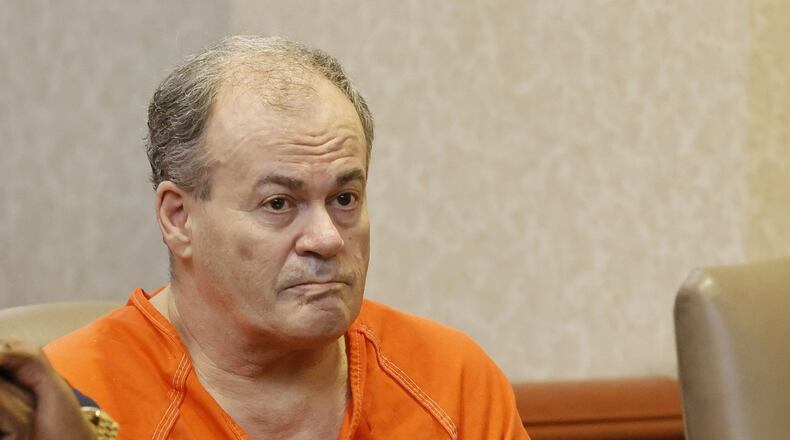Prior to his sentencing, Ailes was classified as a sexually-oriented offender meaning he will have to register with the sheriff’s office where he lives for 10 years after released from prison.
The victim, now a 38-year-old woman living in California, stood a few feet away from Ailes telling the judge she has been able to move on with her life, but the attack forever changed her.
‘It was a brutal, terrorizing attack,” she said, noting the assault has made her more cynical and fearful.
The victim said she was fearful during the assault that she was going to be kidnapped and was concerned about her housemates.
“Lloyd taught me that there are people out there who feel it is okay to take as they please,” she said.
Ailes, who the defense says is in failing health and has suffered two heart attacks, sat at the defense table and offered an apology.
“I am sorry, if I could take it back I would,” Ailes said.
Spaeth said in his time on the bench it is one of the worst sexual assault cases he can remember. He noted the “brutal darkness of the defendant’s actions.”
Ailes was taken into custody on Dec. 9, 2021, in Connersville, Ind., by Ohio law enforcement based on evidence pieced together by DNA tracing.
The indictment came after a lengthy investigation by the Butler County Prosecutor’s Office using DNA genealogy tracing. The investigation was led by county prosecutor’s investigator Paul Newton.
The assault occurred on Jan. 9, 2006, at an off-campus house, according to the indictment and Gmoser.
Ailes wore a mask, but his face was visible to the woman for a brief time and a sketch of the suspect was developed. His DNA also was found and labeled “John Doe” by Oxford Police. After forcing the woman to commit several sex acts, Ailes took $60 from her purse, Gmoser said.
In March 2006, a similar attack happened in Fayette County, Ind. DNA collected there matched the DNA in the Oxford case. However, there was no match to DNA entered in any law enforcement database. The case went cold until following the DNA through genealogy pointed to the accused.
Gmoser said his office had been working for years with experts from Parabon NanoLabs to track down the suspect using genealogy DNA databases to piece together a family tree of the suspect.
That’s when search began that ended with “John Doe” becoming Lloyd Ailes.
Investigators were able to find the suspect’s father, and then through unraveling a web of genealogy, eventually found his mother. But the man did not know he had fathered the son and the mother didn’t know her husband was not the father, Gmoser said.
Gmoser held a press conference after the sentencing that showcased the detailed work unraveling the case that started with “gumshoe detective work” by the Oxford Police Department and ended with cutting edge technology.
Members of several police agencies involved and assistant prosecutors who were praised by Gmoser the work in solving the case.
Gmoser said more cases will be solved in the future using DNA genetic tracing.
“When it comes to genetic testing, there is no such thing as a cold case. There are only cool cases,” said Gmoser.
He questioned why the Indiana case has not been prosecuted Ailes given the evidence uncovered, noting there has been a wall of silence between his office and the prosecutor’s office in Indiana.
“My hope is upon the conclusion of this case, the Fayette County Ind. prosecutor will see it in the best interests of the state of Indiana to bring charges of rape against his defendant in view of the fact in view of the fact all the evidence has been established,” Gmoser said.
About the Author

